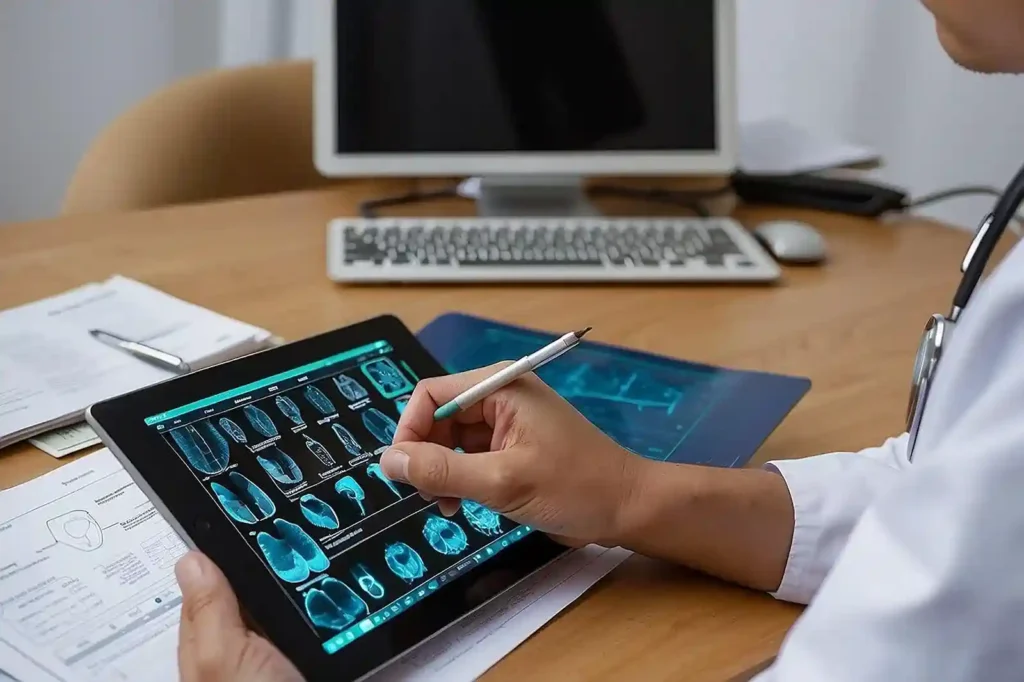In recent years, predictive modeling has become one of the most discussed and promising directions in healthcare. This innovative approach not only improves the diagnosis and treatment of diseases but also significantly enhances the quality and efficiency of medical care. In this article, together with experts from Light IT Global, we will discuss the main concepts of predictive modeling, its key technologies, and examine its practical application in healthcare.
Key concepts of predictive modeling
Predictive modeling is the process of using mathematical models and algorithms to predict future events based on the analysis of historical data. In particular, predictive modeling in healthcare compares the progression of diseases, treatment outcomes, and assesses the risk of complications. The main goal of predictive modeling is to provide healthcare providers with tools for more informed and accurate diagnoses and treatment methods.
Technologies and tools
Modern predictive modeling heavily relies on machine learning and artificial intelligence. Among the most commonly used tools are:
- Python and machine learning libraries (e.g., Scikit-learn, TensorFlow, PyTorch);
- Data analysis platforms (e.g., IBM Watson Health, Microsoft Azure Machine Learning);
- Electronic health records (a data source for predictive models, containing extensive information about patients and their medical histories).
Application of predictive modeling in healthcare

According to the experts at Light IT Global, predictive modeling is widely used in medicine. Let’s look at the main areas of its application.
- Disease diagnosis. By using patients’ genetic data, models predict the likelihood of developing various diseases such as diabetes, cancer, or cardiovascular diseases. This allows doctors to take preventive measures and start treatment at early stages, significantly increasing patients’ chances of successful recovery.
- Treatment planning. By analyzing data from patients with similar diseases and their response to various treatments, models recommend the most effective treatment methods for a specific patient. This personalizes medical care and improves its effectiveness.
- Disease prevention. By analyzing risk factors and patient behavior patterns, models predict the likelihood of developing chronic diseases and suggest individual prevention programs. These programs contain recommendations for lifestyle changes, regular medical check-ups, and other preventive measures aimed at reducing the risk of diseases.
Benefits of predictive modeling in medicine
Predictive modeling helps detect diseases at early stages, significantly increasing the chances of successful treatment. For example, machine learning models can analyze medical test results and symptoms to detect cancer early. A study conducted at the Memorial Sloan Kettering Cancer Center developed models that predicted the recurrence of breast cancer with an accuracy of up to 80%, allowing doctors to adjust treatment plans and conduct more intensive patient monitoring.
Additionally, predictive modeling helps reduce healthcare costs by optimizing treatment and prevention processes. For example, a system developed at the Cleveland Clinic uses electronic health record data to predict the likelihood of hospitalization for patients with chronic diseases. This allows medical staff to take preventive measures, reducing the number of hospitalizations and associated costs.
Predictive modeling also contributes to more accurate and informed medical decisions. At the University of California, San Francisco, a model was developed that uses data from stroke patients to predict treatment outcomes. It helped doctors choose the most effective treatment methods, leading to a 15% reduction in mortality among stroke patients.
Predictive models allow medical care to be tailored to the individual characteristics of each patient. For example, Mayo Clinic developed a model that analyzes patients’ genetic data and predicts their response to various medications. This allowed doctors to prescribe more effective and safer medications, improving treatment outcomes and reducing the risk of side effects.
Successful examples of predictive modeling in healthcare

Here are a few inspiring examples of successful implementation of predictive modeling in healthcare.
- The University of Pennsylvania Medical Center developed a model to predict sepsis in intensive care unit patients. It analyzes patient data in real-time and notifies medical staff about potential problems, allowing treatment to start earlier and reducing mortality.
- Kaiser Permanente hospitals implemented a model to forecast blood supply needs. It takes into account data from previous surgeries, seasonal fluctuations, and other factors, allowing more accurate planning of blood supplies and reducing the number of expired units of blood.
- Intermountain Healthcare clinics developed a model that predicts the risk of falls in elderly patients based on their medical data. It helped reduce the number of falls by 20% by early identification of high-risk patients and implementation of preventive measures.
These examples demonstrate how predictive modeling improves the quality of medical care, reduces costs, and increases the efficiency of medical decisions, providing a more personalized and proactive approach to healthcare.



































